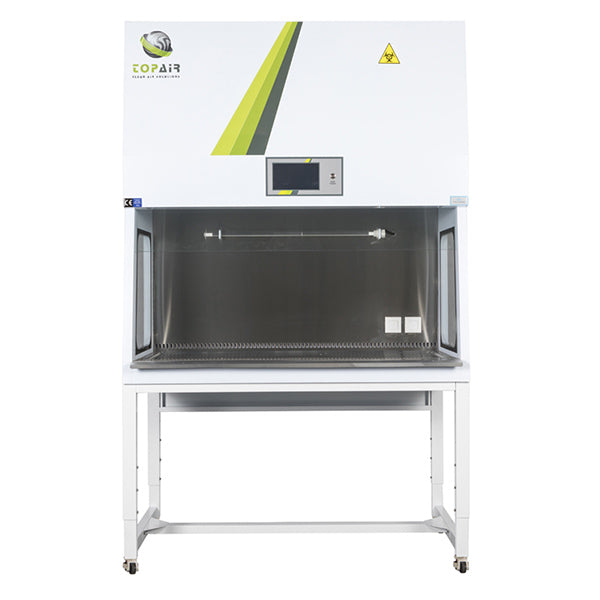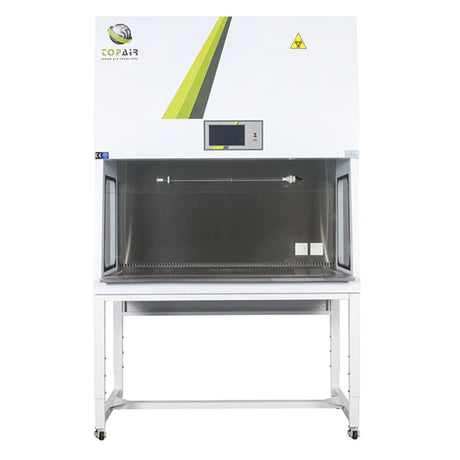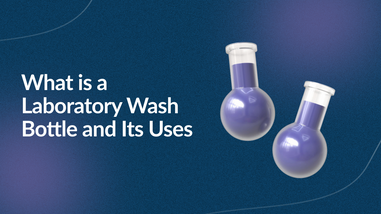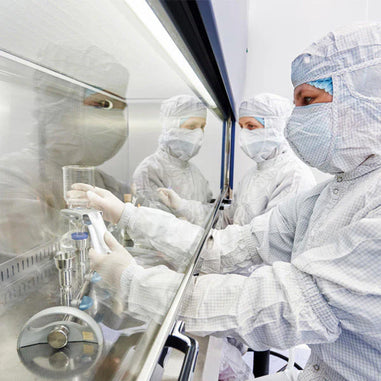- No products in the cart.
In the ever-evolving landscape of scientific research, ensuring the safety of both researchers and the environment is paramount. Biosafety cabinets (BSCs) play a crucial role in achieving this goal by providing a controlled environment for the manipulation of hazardous materials. However, with a myriad of options available in the market, selecting the right biosafety cabinet for your lab can be a daunting task. This blog aims to simplify the process and guide you through the key considerations in choosing the perfect biosafety cabinet.
Understanding Biosafety Levels (BSL)
The first step in selecting a biosafety cabinet is understanding the biosafety levels relevant to your work. Biosafety levels are ranked from BSL-1 to BSL-4, with each level corresponding to specific safety and containment requirements. Different laboratories may require different levels of protection based on the nature of the research and the materials being handled. Assessing the biosafety level of your work is fundamental to choosing a cabinet that aligns with your safety needs.
Classifying Biosafety Cabinets
Biosafety cabinets are categorized into three classes – Class I, Class II, and Class III. Each class serves a unique purpose and offers varying levels of protection.
-
Class I Biosafety Cabinets: These cabinets provide personnel and environmental protection, but not product protection. They are suitable for work with low to moderate-risk agents, offering protection for the user through inward airflow and HEPA filtration.
-
Class II Biosafety Cabinets: The most commonly used cabinets in laboratories, Class II cabinets are further divided into types A1, A2, B1, and B2. They provide personnel, environmental, and product protection. Type A cabinets recirculate 70% of the air through the HEPA filter, while Type B cabinets exhaust 30% of the air and provide additional protection by drawing in unfiltered air.
-
Class III Biosafety Cabinets: These cabinets provide the highest level of protection and are ideal for working with highly hazardous materials. They are completely enclosed, with all operations conducted through attached gloves. Class III cabinets are gas-tight, ensuring that no contaminants are released into the environment.

Considerations for Your Lab
-
Research Requirements: Evaluate the specific needs of your research. If your work involves microbiological agents that require containment, a Class II biosafety cabinet may be suitable. However, if you are dealing with highly infectious or toxic materials, a Class III cabinet might be necessary.
-
Airflow Patterns: Understanding the airflow patterns of biosafety cabinets is crucial. Class II cabinets, for instance, can have either vertical or horizontal airflow. The choice depends on the type of work being performed. Vertical flow cabinets are suitable for clean air applications, while horizontal flow cabinets are ideal for applications that require the protection of the user.
-
Ergonomics and User Comfort: Researchers spend considerable time working within biosafety cabinets, so ergonomics and user comfort are essential considerations. Cabinets with adjustable stands, easy-to-use controls, and comfortable armrests can contribute to a more productive and comfortable working environment.
-
Maintenance and Certification: Regular maintenance and certification are vital for the effective performance of biosafety cabinets. Ensure that the manufacturer provides clear guidelines for maintenance, and schedule regular certification checks to guarantee the continued safety and reliability of the cabinet.
Budget Considerations
While safety should be the top priority, budget constraints are a reality for many laboratories. It's essential to strike a balance between the required level of protection and available resources. Consider the long-term costs, including maintenance, certification, and energy consumption, to make an informed decision that aligns with your lab's financial capacity.
Consulting with the Pros at Lab Pro
When in doubt, seek the advice of biosafety Pros at Lab Pro or consult with our sales representatives. Our Pros can provide valuable insights based on your specific requirements and guide you toward the most suitable biosafety cabinet for your lab.
Conclusion:
In conclusion, choosing the right biosafety cabinet is a critical decision that directly impacts the safety of laboratory personnel, the environment, and the integrity of research. By carefully assessing the biosafety level of your work, understanding the different classes of cabinets, and considering factors such as airflow patterns, ergonomics, and budget, you can make an informed choice that ensures a secure and productive laboratory environment. Remember, safety is not just a priority; it's a commitment to the integrity of scientific research and the well-being of those conducting it.
For over 40 years, Lab Pro Inc. has been your reliable destination for premium cleanroom lab supplies, including top-notch biohazard safety cabinets. Trusted by global industries, we offer exceptional quality in every product. Experience next-day service in California. Contact us online or at 888-452-2776 to explore tailor-made solutions for the laboratory industry. Elevate your experiments with Lab Pro Inc. – your partner in precision and excellence, now featuring biohazard safety cabinets.












































